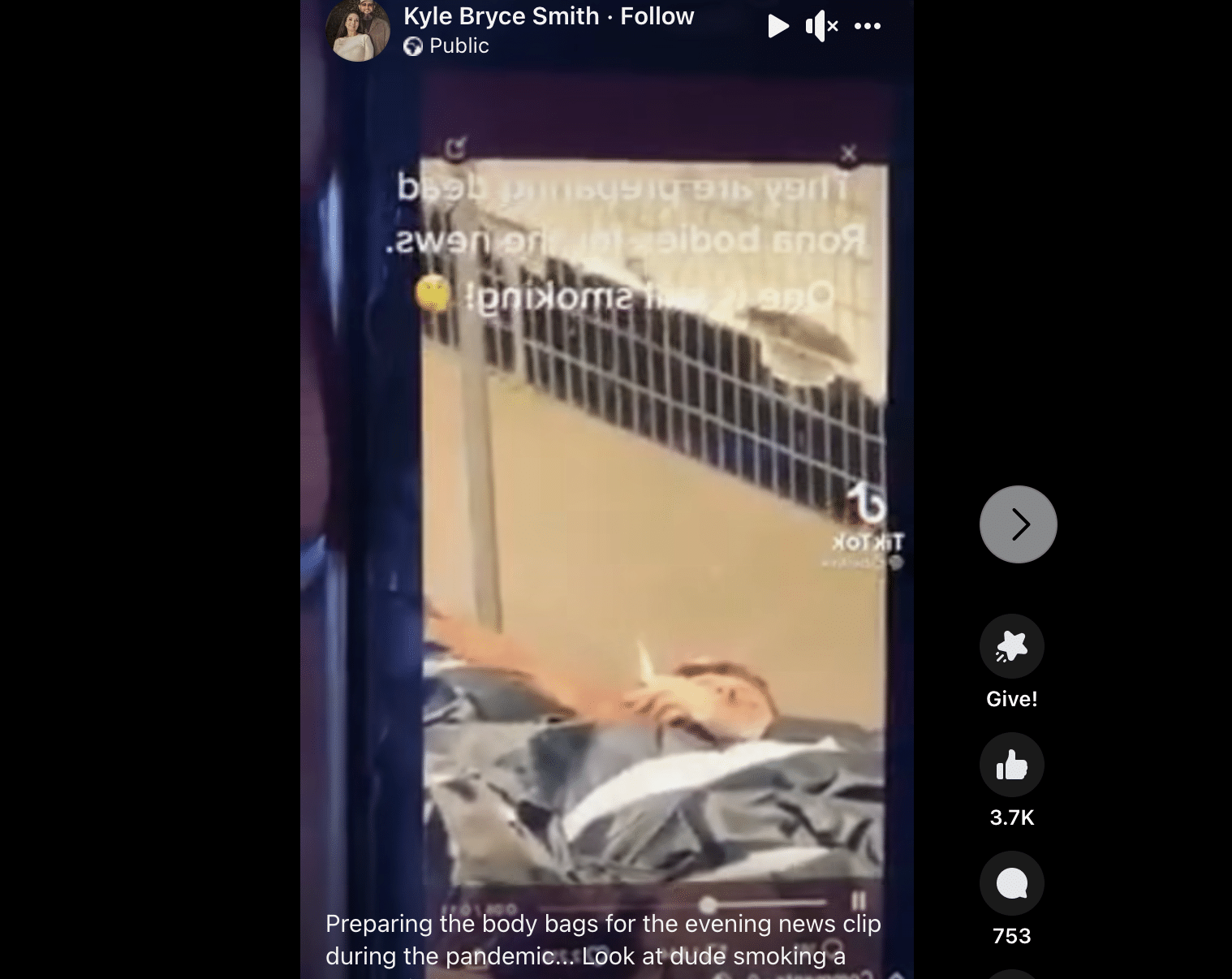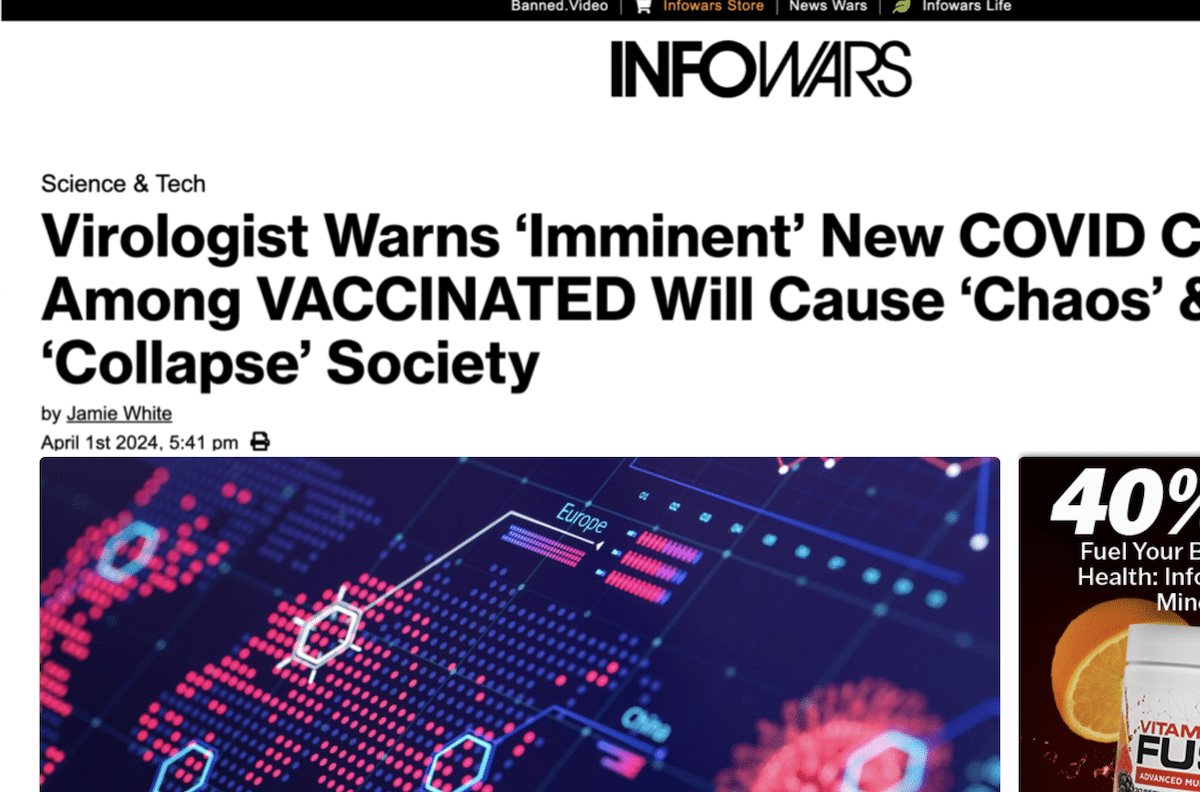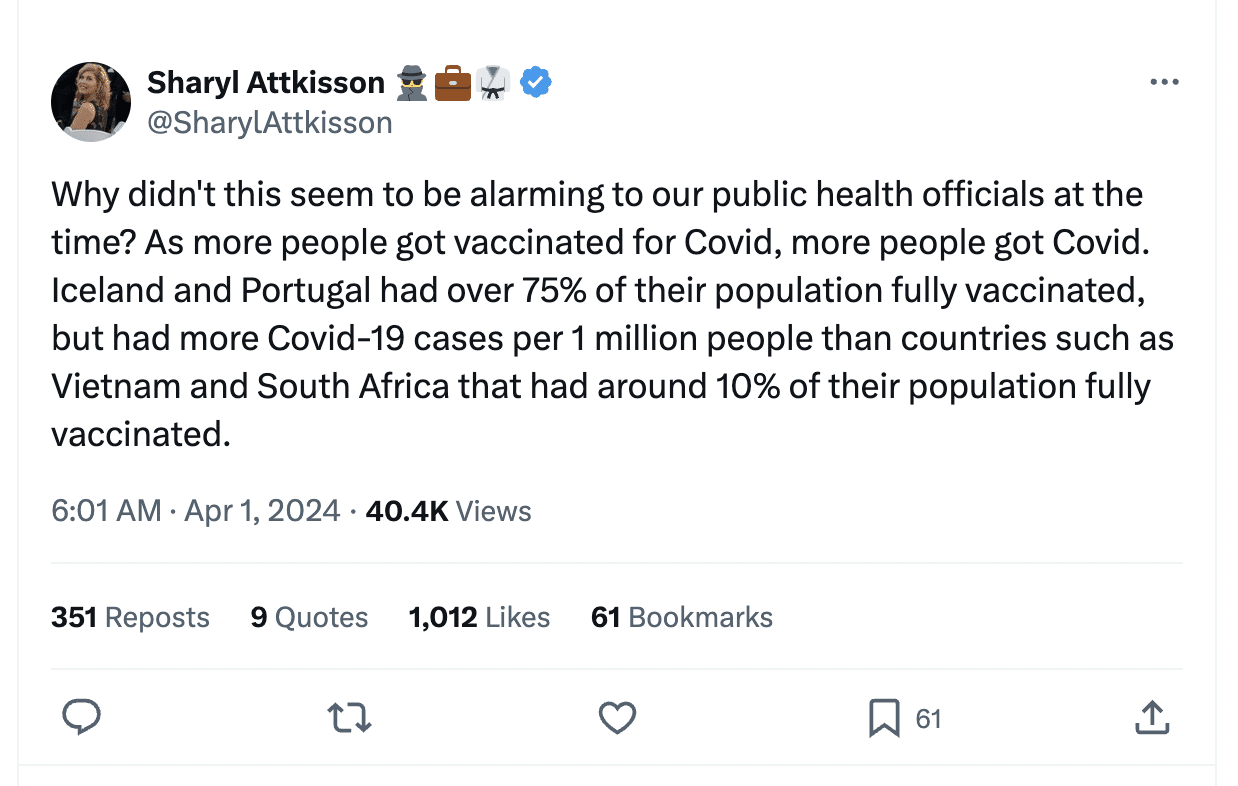- Health
Masks are effective at reducing COVID-19 primary transmission through respiratory droplets; the CDC acknowledges airborne transmission via aerosols can also occur
Key takeaway
Current epidemiological data indicates that COVID-19 primarily spreads through respiratory droplets that are released when an infected person sneezes, coughs, or talks. Growing evidence suggests that smaller aerosol particles may also play a role in the transmission of COVID-19. Wearing face masks and cloth face coverings are effective measures for reducing the spread of COVID-19 because they reduce the transmission of large respiratory droplets. In contrast, some aerosol particles may leak through the fabric pores and around the mask. To reduce the risk of COVID-19 infection, wearing face masks must be combined with other transmission control measures, such as physical distancing, good hand hygiene, and avoiding crowded and poorly ventilated spaces.
Reviewed content
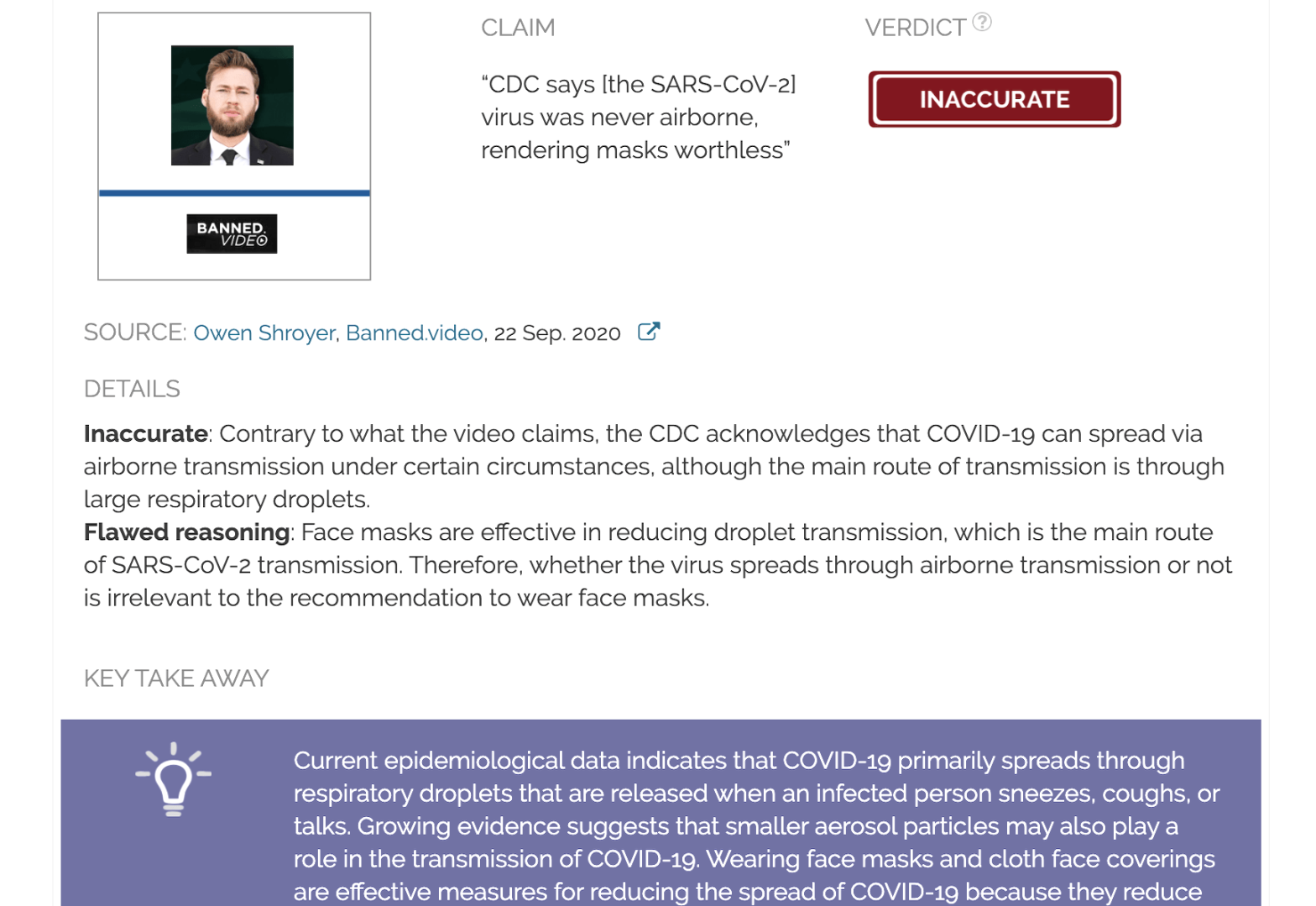
Verdict:
Claim:
“CDC says [the SARS-CoV-2] virus was never airborne, rendering masks worthless”
Verdict detail
Inaccurate: Contrary to what the video claims, the CDC acknowledges that COVID-19 can spread via airborne transmission under certain circumstances, although the main route of transmission is through large respiratory droplets.
Flawed reasoning: Face masks are effective in reducing droplet transmission, which is the main route of SARS-CoV-2 transmission. Therefore, the fact that the virus can spread through airborne transmission does not render masks "worthless".
Full Claim
“CDC says [the SARS-CoV-2] virus was never airborne, rendering masks worthless”
Review
A 22 September 2020 video that makes several inaccurate claims about the COVID-19 pandemic went viral on Facebook in late October, receiving more than 35,000 interactions on the platform, according to the social media analytics tool CrowdTangle. The video features Owen Shroyer and was published by Banned.video, which is affiliated with InfoWars, a website that was banned from several media platforms, including Facebook, Twitter, and YouTube.
In the video, Shroyer claims that the U.S. Centers for Disease Control and Prevention (CDC) confirmed SARS-CoV-2, the virus that causes COVID-19, was never airborne, and wearing face masks is unnecessary. Shroyer’s claim, which is based on a recent shift in the CDC’s guidance on COVID-19 transmission, is inaccurate and based on flawed reasoning, as we explain below.
On 18 September 2020, the CDC updated guidance on its website to include aerosols among the most common forms of SARS-CoV-2 transmission. CNN reported this change on 20 September 2020, and on 21 September 2020, the CDC removed the update with a note stating that it had been posted “in error”, and it was “updating its recommendations in regards to airborne transmission”. According to the World Health Organization (WHO), airborne transmission is defined as the spread of an infectious agent through particles less than 5 micrometers in size, called aerosols, which can travel further and remain suspended in the air for longer periods of time[1]. Transmission through larger respiratory droplets (5 to 10 micrometers in size) generally occurs in close proximity to the infectious person, and is not considered airborne transmission. Figure 1 shows the difference between both types of transmission.
Current epidemiological data indicate that the main mode of COVID-19 transmission is through the release of contaminated respiratory droplets, which occurs when an infected person coughs, sneezes, sings, talks, or breaths. Most of these particles fall to the ground quickly, generally infecting individuals located within a few feet or sharing a confined space with an infected person for long periods of time. However, increasing evidence suggests that airborne transmission may also play a role in the spread of COVID-19.
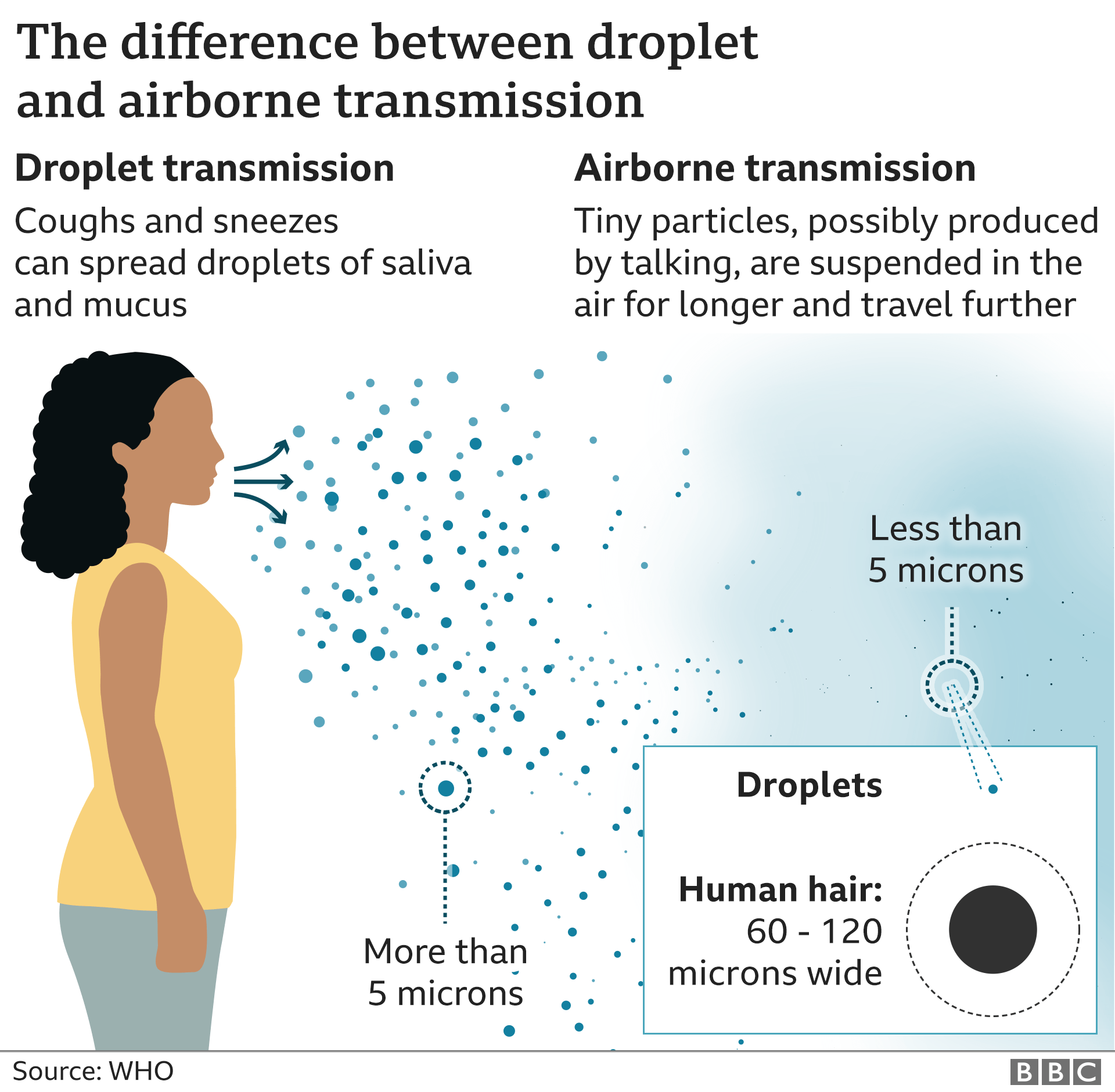
Figure 1. Differences between droplet and airborne transmission. One micron is equivalent to one micrometer. Image source.
The CDC and other health agencies recommend that the general public use cloth face masks to reduce the spread of COVID-19, because masks act as physical barriers that block the release of respiratory droplets and larger aerosol particles, thereby reducing the spread of infectious particles. Wearing face masks can also reduce the likelihood that people who are unaware they are infected will transmit the virus to others. Infected individuals who do not appear to be ill are responsible for about half of COVID-19 transmission, as Health Feedback explained in this review.
The claim that face masks are useless in the absence of aerosol transmission is based on flawed reasoning. The intended use of regular masks and cloth face coverings is to block respiratory droplets, which is the main route of SARS-CoV-2 transmission. In fact, cloth masks are less effective at blocking small aerosol particles, some of which may leak through the pores of the fabric[2]. Therefore, the possibility that SARS-CoV-2 spreads through airborne transmission does not affect the recommendation of wearing face masks, although it may change the type of mask recommended.
In addition, it is inaccurate to claim that airborne transmission of SARS-CoV-2 never happens. Reports of several COVID-19 outbreaks, whose characteristics are consistent with airborne transmission[3-6] led 239 scientists to co-sign an open letter in July 2020 urging public health agencies to review their guidance. As a result, both the CDC and the WHO acknowledged the possibility of airborne transmission under certain circumstances, such as in enclosed spaces with poor ventilation and prolonged exposure to high concentrations of aerosols. It is therefore inaccurate to claim that the CDC stated that SARS-CoV-2 “was never airborne.” The CDC does recognize that SARS-CoV-2 can spread through aerosols, although it does not consider this to be the main route of transmission.
Further evidence suggests that aerosols may play a more important role in the spread of COVID-19 than initially thought. For example, a study published in The New England Journal of Medicine compared the stability of SARS-CoV-2 and SARS-CoV-1 (the virus that causes severe acute respiratory syndrome or SARS) in artificially generated aerosols and found that both remained infectious for at least three hours[7]. Another study from the University of Florida detected infectious SARS-CoV-2-containing aerosols in a hospital room up to 16 feet away from a COVID-19 patient[8].
Given that SARS-CoV-2 can be present in aerosols, the question now is how much aerosol transmission contributes to the number of infections. If airborne transmission plays a major role in the spread of SARS-CoV-2, public policies may be revised to consider ventilation systems in places where people gather, like schools, restaurants, or public transport, for example.
In summary, the claim that the CDC stated that “the virus was never airborne” is inaccurate. The CDC does acknowledge that airborne transmission of SARS-CoV-2 occurs, although the main route of transmission is through large respiratory droplets (droplet transmission). The claim that face masks are “worthless” if the infection is not spread by airborne transmission is inaccurate and a red herring, as it wrongly suggests that cloth masks are intended to block airborne transmission. Authorities encourage the general public to wear face masks, which block respiratory droplets, to reduce the spread of COVID-19. They also recommend people correctly wear and remove their face masks, wash or dispose of them after each use, and maintain good hand hygiene and physical distancing.
READ MORE
Shroyer also makes the unsupported claim that authorities are faking the number of COVID-19 cases. This claim is based on clips from news reports and press briefings from different dates, states, counties, and cities, all of which report 33 new cases. This review by Lead Stories debunks this claim and explains that a YouTube search for random numbers yields similar results.
REFERENCES
- 1 – Tang et al. (2020) Aerosol transmission of Shttps://archive.is/SbeCtARS-CoV-2? Evidence, prevention and control. Environment International.
- 2 – Leung et al. (2020) Respiratory virus shedding in exhaled breath and efficacy of face masks. Nature Medicine.
- 3 – Miller et al. (2020) Transmission of SARS‐CoV‐2 by inhalation of respiratory aerosol in the Skagit Valley Chorale superspreading event. International Journal of Indoor Environmental and Health.
- 4 – Buonanno et al. (2020) Quantitative assessment of the risk of airborne transmission of SARS-CoV-2 infection: Prospective and retrospective applications. Environment International.
- 5 – Cai et al. (2020) Indirect virus transmission in cluster of COVID-19 cases, Wenzhou, China, 2020. Emerging Infectious Diseases.
- 6 – Shen et al. (2020) Community outbreak investigation of SARS-CoV-2 transmission among bus riders in eastern China. Journal of American Medical Association.
- 7 – Van Doremalen et al. (2020) Aerosol and surface stability of SARS-CoV-2 as compared with SARS-CoV-1. The New England Journal of Medicine.
- 8 – Lednicky et al. (2020) Viable SARS-CoV-2 in the air of a hospital room with COVID-19 patients. International Journal of Infectious Diseases.

